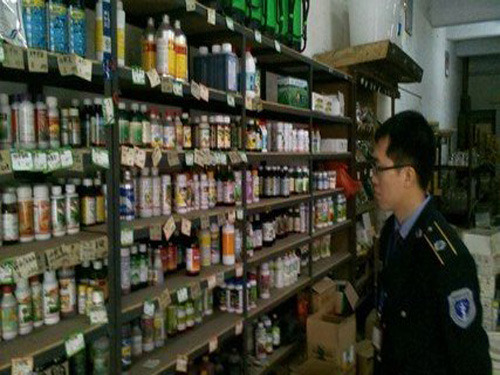
According to the "2014-2020 Global Pesticide Market Trends and Forecasts" report, global pesticide production is expected to increase from 2.3 million tons in 2013 to 3.2 million tons in 2019, and the compound annual growth rate from 2014 to 2020 will be 6.1%. . The value of the global pesticide market in 2013 was 51.9 billion U.S. dollars, and it is expected to increase to 75.9 billion U.S. dollars in 2019. From 2014 to 2020, the compound annual growth rate is expected to be 6.9%.
North America remains the world's largest pesticide market, but market demand growth may be the slowest. The Asia-Pacific region is expected to become the fastest growing demand in the pesticide market. From 2014 to 2020, pesticide production in the region will grow at a compound annual growth rate of 7.9%.
In the application field, crop-based terminal pesticide products will maintain the fastest growth in consumption and consumption value, and will maintain their leading position in many application fields.
Factors driving the growth in the demand for pesticides include a decrease in arable land, population growth, and an increase in demand for crop production. On the other hand, regulatory agencies such as the US Environmental Protection Agency regularly introduce legal restrictions on reducing the use of pesticides to reduce the environmental damage caused by the use of pesticides and allow consumers to identify pesticide consumption awareness. They expect that this measure will help slow down the increase in demand for chemical pesticides.
Biopesticides are processed and manufactured from renewable resources, without synthetic chemical active ingredients and chemical residues, and are environmentally friendly products. Compared with chemical pesticides, people are witnessing more rapid market growth of biopesticides. Due to its low toxicity, high efficiency and safety in the control of pests, some countries have already put forward proposals for vigorously promoting the development of biological pesticides. However, the growth of the bio-pesticides market is not easy. It is still affected by the deep-rooted concept of the pesticide market, the great difference in the efficacy of biological pesticides, and the lack of consumer product awareness. From 2014 to 2020, although the sales and value of biological pesticides will grow rapidly, chemical pesticides will still dominate the global market.
The disc of the wafer butterfly valve is installed in the diameter direction of the pipeline. In the cylindrical channel of the butterfly valve body, the disc-shaped disc rotates around the axis, and the rotation angle is between 0° and 90°, which can play the role of flow regulation. When the disc rotates to 90°, the valve reaches the maximum opening.
Compared with the gate valve, the wafer butterfly valve has the characteristics of simple structure, small volume and light weight.
It consists of only a few parts. And it only needs to rotate 90° to open and close quickly, the operation is simple, and the valve has good fluid control characteristics.
When the butterfly valve is in the fully open position, the thickness of the butterfly plate is the only resistance when the medium flows through the valve body, so the pressure drop generated by the valve is very small, so it has better flow control characteristics. Butterfly valve has two types of sealing type: elastic soft seal and metal seal. Elastic soft sealing valve, the sealing ring can be embedded on the valve body or attached to the periphery of the disc.
Valves with metal seals generally have a longer life than those with elastic seals, but it is difficult to achieve complete sealing. Metal seals can adapt to higher operating temperatures, while elastic soft seals have the defect of being limited by temperature.
When the project is used and installed, the double-headed butterfly valve is connected between the two pipeline Flanges with stud bolts, and the flanges at both ends of the valve are connected to the pipeline flange with bolts.
The wafer butterfly valve has good sealing performance, light operation, secondary corrosion, high temperature resistance, convenient operation, flexibility, safe and reliable use, and has been widely used.
Widely used in cooling water systems of petroleum, gas, chemical, water treatment, thermal power stations, and SO2, steam, air, gas, ammonia, CO2, oil, water in chemical, petrochemical, smelting, pharmaceutical, food and other industries , Brine, lye, seawater, nitric acid, hydrochloric acid, sulfuric acid, phosphoric acid and other media pipelines are used as adjustment and interception devices.
Divided by structure
(1) Center sealing butterfly valve (2) Single eccentric sealing butterfly valve (3) Double eccentric sealing butterfly valve (4) Triple eccentric sealing butterfly valve
According to the sealing surface material is divided into
(1) Soft sealing butterfly valve.
1) The sealing surface is composed of non-metallic soft material to non-metallic soft material.
2) The sealing surface is composed of metal hard material and non-metal soft material.
(2) Metal hard sealing butterfly valve.
The sealing surface is composed of metal hard material to metal hard material.
Divided by material: cast iron, cast steel, stainless steel
Butterfly Valves,Ss Butterfly Valve,Stainless Steel Butterfly Valve,Stainless Butterfly Valve
Inner Mongolia Overseas.Trade co.,LTD , https://www.flangevalvejoint.com